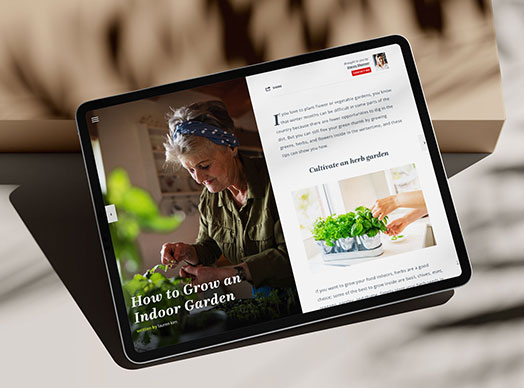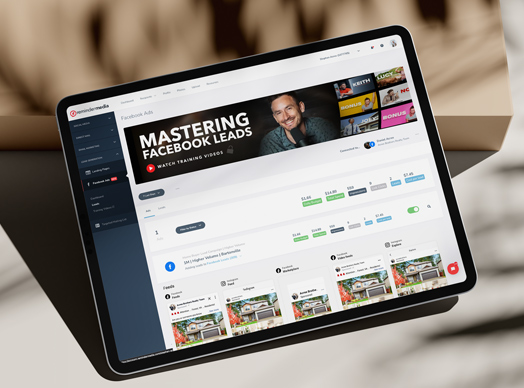Ep. 264: 6 Tips for Irresistible Subject Lines (with examples)
How to Create Some of the Best Email Marketing Subject Lines and Increase Email Open Rates
Who should listen: Anyone wanting to improve their email open rate or add to their list of subject line strategies.
Key idea: An email subject line has one job—to get the recipient to open the email—and, while there are many ways to do that, you have to know your audience in order to pick the one that will appeal to them.
Action item: Start resending emails to recipients who didn’t open.
We’ve all heard the ridiculous numbers telling us how many emails are sent and received each day (more than 300 billion), how many emails are sitting in the average inbox (200), the gross amount of spam (just over 47% of all emails), and the number of emails that are ignored—deleted without ever being opened (65%).
We often talk about being the solution to your clients’ pain points, but the marketer’s pain point seems insurmountable. Marketers lie awake at night trying to come up with more subject lines that will stand out and oblige consumers to open their painstakingly crafted emails.
In this week’s Silver Dollar episode, we offer you six types of email subject lines proposed by DigitalMarketer that will help you get those clicks and improve your open rate. They are subject lines that:
- appeal to self-interests
- activate curiosity
- make an offer
- create a sense of urgency/scarcity
- provide information/news
- tell a story
1. Email subject lines that appeal to consumers’ self-interests
These subject lines work because they promise the recipient that if they open the email, then they will receive a benefit. The keys to an effective self-interest subject line are:
- Directly naming the benefit in the subject line, and
- Ensuring that you’re promising a benefit and not just a feature.
Email marketers will tell you that, when writing subject lines, you should always choose to be clear rather than clever. For example, if your email is announcing a special sale, a clear subject line that directly names the benefit will include the exact discount and the product or service to which it applies. A subject line that reads All lawn ornaments 60% off fits these criteria and will attract a warmer lead (those specifically interested in lawn ornaments).
Now, before we get too far along, it’s important to understand that, as with most rules, there are exceptions and that a single subject line can incorporate features of more than one type.
If you sent an email to your list and its subject line was Everything on sale!, you might get a ton of clicks because, while vague, it does make a big promise. Big promises tend to spark interest and, in this case, also a bit of curiosity—what’s on sale, and what’s the discount? But because it also casts a wider net, you may not get as many recipients to click through since fewer will likely not be interested in what you’re promoting.
When you listen to the episode, you’ll discover a few subject lines we’ve used to appeal to our clients’ self-interests. One had an incredible 52.4% open rate from our clients.
2. Email subject lines that activate consumers’ sense of curiosity
Curiosity is a powerful emotion. It is the desire to learn, know, and discover, and it plays a central role in motivating us to fulfill those desires. Subject lines that appeal to consumers’ curiosity work because they leave out a key element thus enticing them to open the email to fill in the blank.
Here are examples we used in the episode:
- Asking for referrals? We guarantee you’re doing it wrong. This subject line got 17.6% of nearly 120,000 people to open the email.
- Hate cold calling? Do this instead. We’re super proud of this one. It got us a 27% open rate.
To write an effective subject line that appeals to your audience’s curiosity, you need to know it well, especially its pain points. When crafting the subject lines above, we were targeting salespeople—a group who traditionally wants referrals and who dislikes cold calling. Suggesting they’re thwarting their efforts (what am I doing wrong?) and giving them an alternative to something undesirable (what’s the option?) struck the right chord and won us the clicks.
3. Email subject lines that make irresistible offers
If you do business with any e-commerce company, then you’ve received more than your fair share of marketing emails that include offers in the subject lines. But if 65% of all emails get deleted before being opened, then it stands to reason that not all those offers were tempting enough to get you to click.
What’s the difference between the offer that gets trashed and the one that gets the click?
It’s the difference between pretty good and irresistible. Irresistible offers are:
- Relevant to your audience. What is your audience experiencing? Currently, homebuyers are experiencing extreme frustration—if they have the good fortune of being able to find a home they want, then they are often dragged into a bidding war that they are likely to lose. Especially relevant to this audience is anything that can help them find a home, avoid a bidding war, or win the war they’re in.
- Well-timed. Someone who has recently bought a house could be interested in an email that promised to help them with tasks often confronted by new homeowners. Emails offering quality, affordable, and guaranteed lawn service, housekeeping, painting, or small repair could get their attention.
- Beyond the ordinary. Can you distinguish your offer so that it stands out on its own without any additional hype? Large discounts and the word free fit this criterion. Does it solve a problem better than other solutions? Emails that promise “faster,” “more convenient,” or “longer-lasting” will have higher open rates. Do you offer something unique, such as same-day service, double your money-back guarantees, courteous and fast service? Look to your value proposition for ideas.
4. Email subject lines that create scarcity or urgency (FOMO)
It’s a well-known fact that we hate to think we’re missing out on something. It’s why some of the best email subject lines include a hint of FOMO, or the fear of missing out, which has been defined by one researcher as “a pervasive apprehension that others might be having rewarding experiences from which one is absent.”
If you can write subject lines that specify an “exclusive offer,” “limited-time offer,” “supplies are limited,” “ending soon,” or something similar, then you are well on your way to improving your open rate. Be careful that you don’t oversell the scarcity or urgency. You also want to use this type of email subject line sparingly—if you overuse it, your recipients will catch on to your strategy and start tuning you out.
5. Email subject lines that provide consumers with information
Email subject lines that promise to deliver company or industry news that your audience wants to know about can show you as your industry’s expert.
For example, if you’re a financial advisor, then you could deliver a monthly or quarterly update on the financial markets and send it with a subject line indicating what’s inside. We’ve had real estate agents on the show who send an email that includes their listing of the day.
The attractiveness of these types of subject lines and emails is that the information inside is valuable to the recipient—it’s either useful, entertaining, or educational.
We’ve seen people reuse the same subject line (especially if it works!) for newsletter emails. The recipients become familiar with the subject line and start to anticipate receiving desired information in their in-boxes. An example would be Issue 12: Jane Esquire’s Market Report. (Including the issue number helps to organize, search, and retrieve distinct emails. You could achieve the same result by adding the date to your subject line.)
6. Email subject lines that tell stories
This type of subject line reads like a teaser that hints at a story to be told in the email. We mention Russell Brunson as being exceptionally skilled at writing this type of subject line.
The subject line announcing our last Stay Paid episode, #263, is How Pull Marketing Pushed Agent Leigh Brown to #1. It includes the name of the protagonist, which is a great tip for writing this type of subject line. It also piques curiosity among our real estate clients—how did Leigh get to #1?
Another tip for storylines is to use ellipses. An ellipse is those three dots at the end of a thought ( . . . ) that suggest there is more to come (another curiosity hook). We didn’t use this example, but it illustrates how you might use an ellipsis—This producer was nearly convicted of murder . . .
Additional resources to help you write great email subject lines
There are many types of email subject lines with thousands of examples and even more variations. Any internet search will bring up a glut of articles promising the best subject lines for sales, catchy subject lines, how to write a fabulous follow-up email subject lines, and the ever-popular abandoned cart subject lines.
You might consider using a subject line tester, like the Coschedule subject line tester, or you can check out the list of testers reviewed by HubSpot. Testers use various criteria to assess the effectiveness of your subject line, and most of them offer free access in exchange for your contact information.
Finally, in addition to reviewing the six types of subject lines discussed above, we also pepper our conversation with other tips and hints—including how to avoid spam filters, whether to use an informal email subject vs. a formal email subject, and when it makes sense to resend emails—so you’ll want to listen for those as well.
Connect | Resources
FREE Tip Sheet: Best Practices for Email Marketing
















 Soundcloud
Soundcloud iHeart Radio
iHeart Radio Spotify
Spotify Spotify
Spotify


